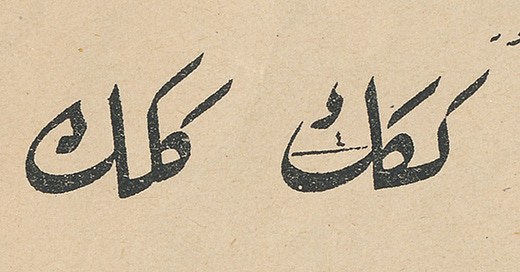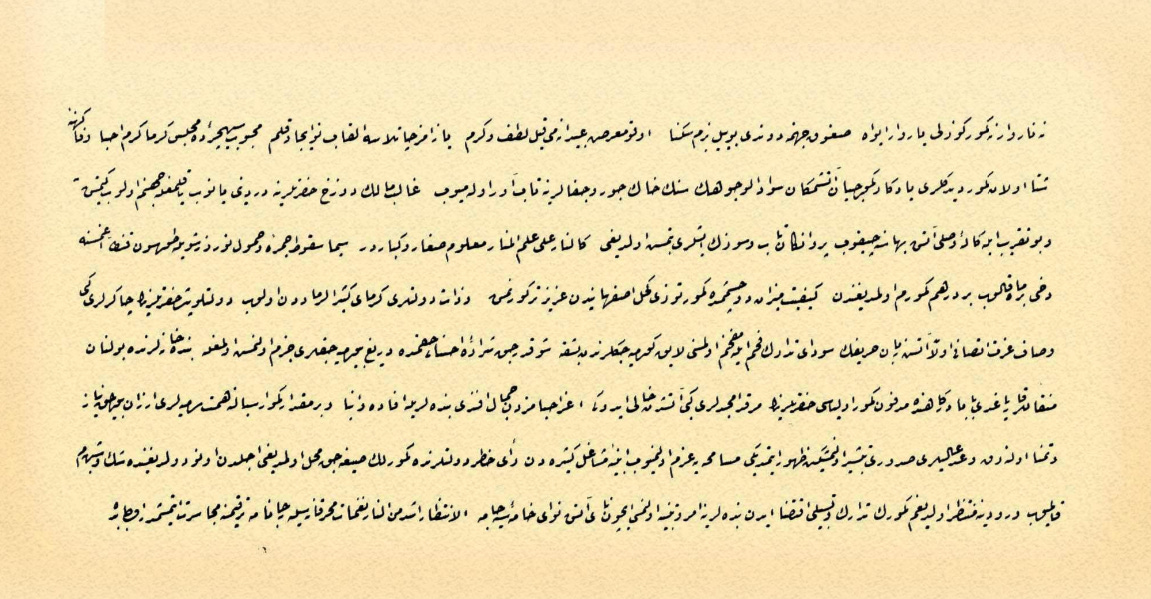Ruq'ah Script: Unveiling the Elegance of Ottoman Calligraphy
Exploring the Historical Significance and Contemporary Relevance of Islamic Calligraphy's Most Accessible Style
Ruq'ah script, a significant facet of Islamic calligraphy, stands distinct for its simplicity and efficiency. Developed in the Ottoman Empire during the 18th and 19th centuries, it evolved as a practical script, diverging from the ornate and complex styles predominant in earlier Islamic calligraphy.
Historical Context and Evolution: Ruq'ah emerged primarily for bureaucratic and everyday use. The Ottoman administration, which spanned a vast and culturally diverse region, required a script that was quick to write and easy to read. This need led to the simplification of the existing naskh script, resulting in Ruq'ah. The script's development coincided with a period of significant administrative expansion and reform in the Ottoman Empire, reflecting a practical approach to governance.
Characteristics of Ruq'ah Script:
Simplicity and Legibility: Ruq'ah is known for its straightforward, legible characters. Unlike the artistic complexities of scripts like thuluth or muhaqqaq, Ruq'ah focuses on clarity and ease of writing.
Small Letters: The letters in Ruq'ah are smaller and more compact compared to other scripts, making it suitable for personal correspondence and record-keeping.
Fewer Diacritics: The script uses fewer diacritical marks (dots and small signs used to differentiate letters), aiding in its speed and fluency.
Rounded Forms: Ruq'ah letters have a rounded, flowing form, contributing to its aesthetic appeal while maintaining its functional utility.
Uniformity and Consistency: The script exhibits a high degree of uniformity in letter sizes and shapes, enhancing its readability.
Cultural and Practical Significance: In the cultural landscape of Islamic calligraphy, Ruq'ah holds a unique place. It bridges the gap between the highly artistic, monumental scripts used in religious and formal contexts, and the everyday writing needs of a diverse empire. Its adoption in Ottoman bureaucracy influenced the writing styles in various regions under Ottoman influence, including the Arab world, where it remains popular in contemporary times for personal and informal writing.
Educational Aspect: In the education of Islamic calligraphy, Ruq'ah often serves as a foundational script. Its relative simplicity makes it an ideal starting point for students before they progress to more complex forms. Learning Ruq'ah provides students with a solid basis in the fundamental movements and shapes that are crucial in Islamic calligraphy.
Contemporary Usage: Today, Ruq'ah is widely used in modern Arabic typography. It is a common script for printing books, newspapers, and for digital media in the Arabic-speaking world. Its legibility and simplicity continue to make it a preferred choice for personal handwriting and informal communication.
In summary, Ruq'ah script, with its historical roots in the Ottoman administration, represents a practical and accessible form of Islamic calligraphy. Its simplicity, legibility, and uniformity not only made it essential for everyday use in the past but also ensured its continued relevance in the contemporary world.










